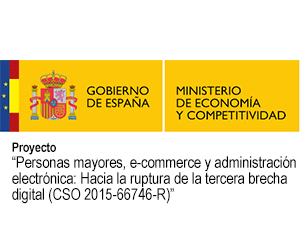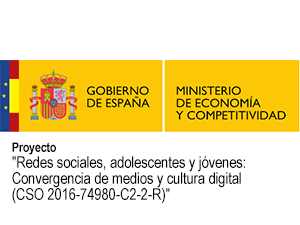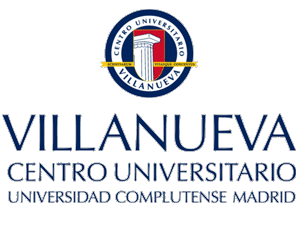Resumen
En España, hasta el año 2015, el mercado de la televisión a la carta o Video on Demand (VoD) tenía un tamaño irrelevante y resultaba poco rentable, pero la llegada de Netflix y HBO y el comienzo de los servicios de Amazon Prime Video, unido a servicios ya existentes como Wuaki y Filmin pasaron a abrir una nueva etapa en estos servicios.
El más reciente informe de la Comisión Nacional de los Mercados y la Competencia (CNMC) Panel de Hogares 2017, reseña que tres de cada diez hogares con acceso a Internet usan plataformas de pago para ver contenidos audiovisuales online, mientras que la plataforma más utilizada entre los hogares con Internet es la de Movistar, Yomvi (o Movistar+ en los dispositivos), que suma 2,16 millones de hogares, seguida por Netflix que triplicaría usuarios en un año sumando casi 1,5 millones (un 9,1% de los hogares). En tercer lugar, se sitúa Vofafone Tv online, con un 5,9% de hogares.
Netflix se autodefine como el principal servicio de entretenimiento por internet en el mundo. Con una presencia que supera los 190 países, 125 millones de personas disfrutan series de TV, documentales y películas en una variedad de géneros e idiomas. Los miembros de Netflix pueden ver lo que quieran, cuando quieran, en casi cualquier pantalla conectada a internet, y pueden reproducir, pausar y ver un título, sin publicidad ni compromisos (Centro de prensa de Netflix, 2018).
La empresa se muestra como un servicio de entretenimiento, no menciona que es también productora y distribuidora de contenidos. Tampoco menciona abiertamente que han cambiado el hábito de ver televisión de manera tradicional. Sin embargo, sí señalan que tienen variedad de géneros e idiomas, opciones de estar en multipantallas y que el visionado es completamente libre para el usuario.
Desde sus orígenes Netflix ha cambiado en varias oportunidades. Por su modelo disruptivo, suman ya varias las investigaciones y estudios recientes. No es extraño que se realicen estudios de una empresa que está catalogada por Forbes dentro de las 10 más innovadoras.
La compañía tiene unas características que la han destacado por romper paradigmas frente a sus competidores y modelos tradicionales, la convergencia de las nuevas tecnologías y medios, han sido aprovechados por Netflix para avanzar e impactar como modelo de negocio ante sus pares y como servicio de VoD ante sus suscriptores.
Objetivos y metodología de la investigación
A fin de ahondar en el planteamiento anterior, nos proponemos explorar la cronología de hechos que han marcado hitos en la creación y avances de esta empresa, además de ahondar en las características de esa nueva audiencia que es participativa, que es multitasking y que ha pasado de consumer a ser prosumer, aprovechando la transmedialidad de los contenidos que ofrece Netflix.
Palabras Clave / Maratón de contenidos / Netflix / Nuevas audiencias / Transmedia / Video a la carta
Abstract
In Spain, until 2015, the market for TV on demand or Video on Demand (VoD) was irrelevant and unprofitable, but the arrival of Netflix and HBO and the begining of Amazon Prime Video services, plus the existing services such as Wuaki and Filmin, began to open a new stage in these services.
The most recent report of the National Commission of Markets and Competition (CNMC) Homes Panel 2017, notes that three out of ten houses with Internet access use payment platforms to watch audiovisual content online, while the most used platform among houses with Internet is Movistar, Yomvi (or Movistar + in the devices), which adds 2.16 million households, followed by Netflix that would triple users in a year adding almost 1.5 million (9.1% of the homes). In third place, Vofafone Tv is online, with 5.9% of homes.
Netflix defines itself as the main internet entertainment service in the world. With a presence that exceeds 190 countries, 125 million people enjoy TV series, documentaries and films in a variety of genres and languages. Netflix members can see what they want, whenever they want, on almost any screen connected to the internet, and can play, pause and watch a title, without advertising or compromises (Netflix Press Center, 2018).
The company is shown as an entertainment service, does not mention that it is also a producer and distributor of content. Neitger he openly mention that they have changed the habit of watching television in a traditional way. However, they do point out that they have a variety of genres and languages, multi-screen options and that the viewing is completely free for the user.
Since its inception Netflix has changed several times. Thanks to this disruptive model, several investigations and recent studies have already added up. It is not strange that studies about a company that is cataloged by Forbes within the 10 most innovative ones are carried out.
The company has characteristics that have stood out for breaking paradigms against its competitors and traditional models, the convergence of news technologies and medias, have been used by Netflix to advance and impact as a business model in front of his peers and as a VoD service before his subscribers.
Objectives and methodology of the research
In order to delve into the previous approach, we propose to explore the chronology of events that have marked milestones in the creation and progress of this company, in addition to delving into the characteristics of this new audience that is participatory, that is multitasking and that has passed from consumer to prosumer, taking advantage of the transmediality of the contents offered by Netflix.
Keywords / Binge Watching / Netflix / New audiences / Transmedia / video on demand
FIRMANTES
| Nombre | Adscripción | Procedencia |
|---|---|---|
| Eglee Ortega Fernández | Universidad Complutense de Madrid | España |















